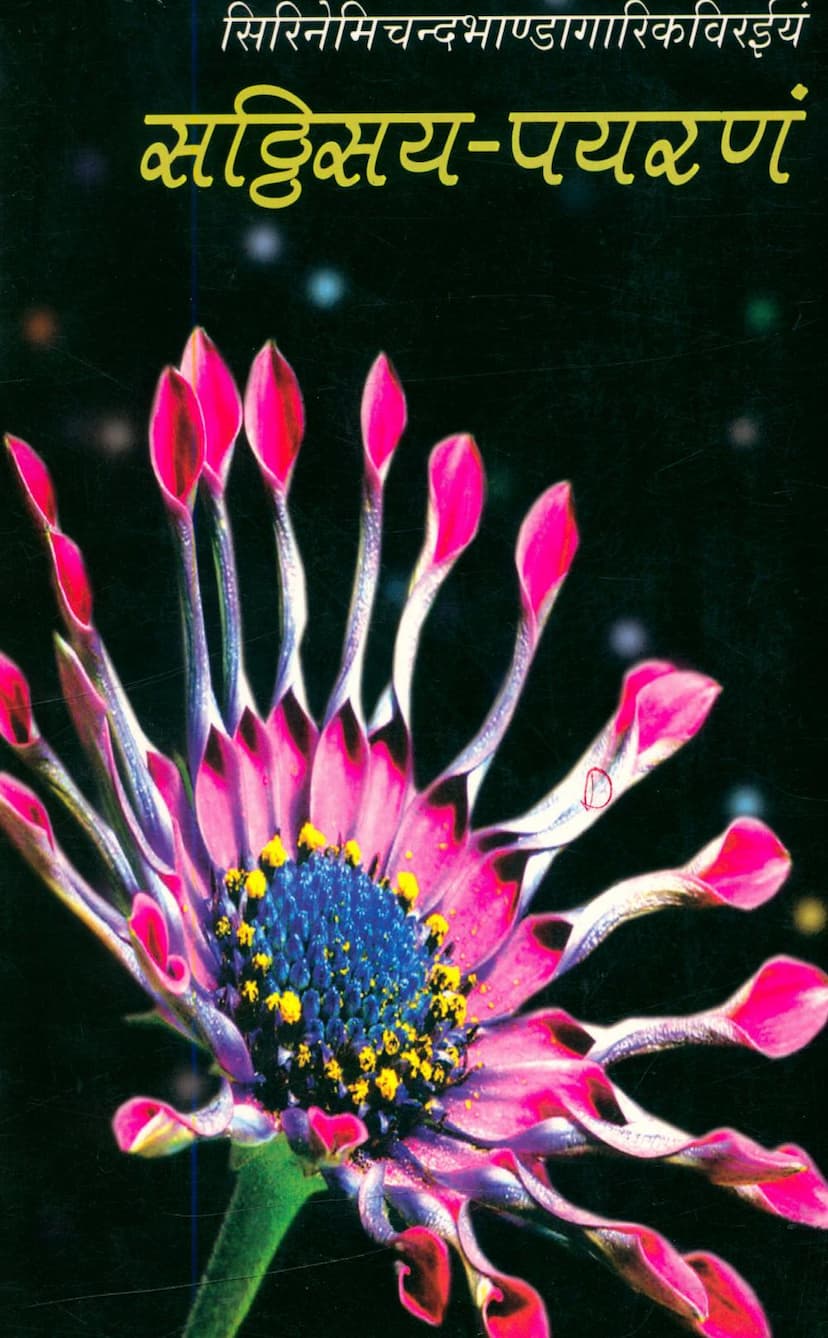Satthisay Payaranam
Added to library: September 2, 2025

Summary
This document is the title page and introductory material for a Jain text titled "Satthisay Payaranam" (सट्ठिसयपयरणं), authored by Nemicandra Bhandagarik (नेमिचन्द्रभाण्डागारिक). The compilation and editing were done by Pu. Panyas Pravar Shri Jaydarshanvijay Ganivarya (पू. पंन्यासप्रवरश्रीजयदर्शनविजयगणिवर्यः), and it was published by Shri Jinagna Prakashan (श्री जिनाज्ञा प्रकाशन) in Ahmedabad in the year V.S. 2066 (2009 CE).
Here's a breakdown of the key information and themes presented in the introductory pages:
1. The Text and Author:
- Title: Satthisay Payaranam (सट्ठिसयपयरणं), meaning "Sixty-Six Thousand Verses" (though the commentary suggests a larger original commentary).
- Author: Nemicandra Bhandagarik (नेमिचन्द्रभाण्डागारिक), a prominent lay follower (shravak) of Jainism. The text highlights that while most scriptures are by monks, this work by a shravak achieved recognition and commentary from esteemed scholars.
- Commentary: The book is presented with a commentary (सटीकं), indicating an in-depth explanation of the original text. The identity of the primary commentator is not explicitly stated in the initial pages but later text mentions commentary by Taparatna and Gunaratna.
2. Compilation and Publication:
- Compiler/Editor: Pu. Panyas Pravar Shri Jaydarshanvijay Ganivarya is credited with compiling, editing, and organizing the text, including the original verses, commentary, and translation.
- Publisher: Shri Jinagna Prakashan, Ahmedabad.
- Publication Year: V.S. 2066 (2009 CE).
- Funding: The publication was funded from the "Gyan Khata" (ज्ञानखाता), a fund dedicated to promoting knowledge, as an act of merit by the Jain community.
3. Historical and Scholarly Context:
- The text discusses the historical context of Nemicandra Bhandagarik, mentioning that he was a follower of Kharatargachha and was enlightened by Acharya Jinpatisuri.
- It references historical accounts, particularly from "Jain Sahitya no Sankshipt Itihas" (A Concise History of Jain Literature) by Mohanlal Dalichand Desai, which mentions Nemicandra Bhandagarik being converted to Jainism by Jinpatisuri.
- The existence of multiple commentaries is noted, including one larger than the one published, referred to as "Brihadvritti" (बृहद्वृत्ति).
- The text's significance is amplified by its citation by esteemed scholars like Upadhyaya Devachandraji in his commentary on Shri Yashovijayji Maharaj's "Gyanasar." This indicates the text's authority and influence in Jain philosophical discussions.
4. Themes and Content Highlighted in the Introduction: The introductory material, particularly the "Prakashkiya" (Editorial) and the sections discussing the "Granth aur Granthkar" (The Book and the Author), delves into various themes that Nemicandra Bhandagarik addresses in his work:
- Critique of Ritualistic and False Beliefs (Mithyatva): The text strongly condemns practices rooted in superstition, ignorance, and attachment to worldly rituals that deviate from true Jain principles. This includes:
- The condemnation of animal sacrifice during festivals like Papnavami.
- Criticism of household heads who establish false beliefs and rituals, leading their families astray.
- Rejection of festivals like Kadvath, Navami, Vatsdvadashi, and Pitru Pindadan as expressions of false beliefs.
- Importance of Samyaktva (Right Faith): The work emphasizes the need to strengthen one's right faith and follow the path of true Jain principles.
- Critique of Ignorance and Ego: It criticizes those who speak incorrectly (usutra) out of ignorance or pride, labeling their knowledge as futile and even more sinful than the actions of householders driven by worldly attachments.
- Discrimination and Partiality: The text criticizes the tendency to favor one's own temple or guru out of attachment and to disrespect or ignore others, even if they are equally qualified. It stresses the need for impartiality and proper discernment.
- Critique of Superficial Religiousity: It highlights the futility of outward religious acts divorced from inner understanding and true faith. It points out the superficiality of worshipping appearances rather than substance.
- Importance of True Knowledge and Conduct: The text implicitly advocates for deep study of scriptures, contemplation, and consistent practice of Jain principles in daily life.
- Critique of Misguided Ascetics and Followers: It addresses the issue of ascetics who mislead followers for worldly gain and followers who remain deluded by such misguidance.
- The Role of Shravakas: It highlights the potential for lay followers to achieve high spiritual understanding and even contribute to spiritual literature, provided they engage with true spiritual guides.
- Historical and Gachhik Context: The extensive appended material discusses the complexities of Jain history, particularly within the Kharatargachha, detailing schisms, lineage disputes, and the establishment of different traditions. It highlights the challenges of historical research due to conflicting accounts and "gachha-raag" (sectarian bias).
- The Founding of Kharatargachha: A significant portion of the appended material is dedicated to exploring the origins of the Kharatargachha, debating whether Acharya Jineshwar or Acharya Jintadatta was the true founder, and analyzing various historical records to support these claims.
5. The "Satthisay Payaranam" itself (from the initial verses): The opening verses set the tone, emphasizing:
- Homage to the Pure: Invoking Arhat (the Enlightened), Dev (God), Suguru (True Guru), and pure Dharma, along with the Pancha Namaskar mantra, as residing eternally in the hearts of the blessed and accomplished.
- The Futility of Other Devotion: It strongly advocates for devotion to the Arhat alone, questioning the effectiveness of adhering to other deities or false practices.
- The Nature of True Liberation: It asserts that only the Dharma prescribed by the Jinas can truly liberate beings from the cycle of birth and death, contrasting it with the illusions of false paths.
- The Importance of Right Faith (Samyaktva): The verses consistently highlight the foundational role of Samyaktva in spiritual progress.
In essence, "Satthisay Payaranam," as presented in these introductory pages, is a profound Jain text that critiques prevalent superstitions and incorrect practices, emphasizes the centrality of right faith and true knowledge, and offers guidance for spiritual progress, all within a rich historical and scholarly context of Jain tradition.